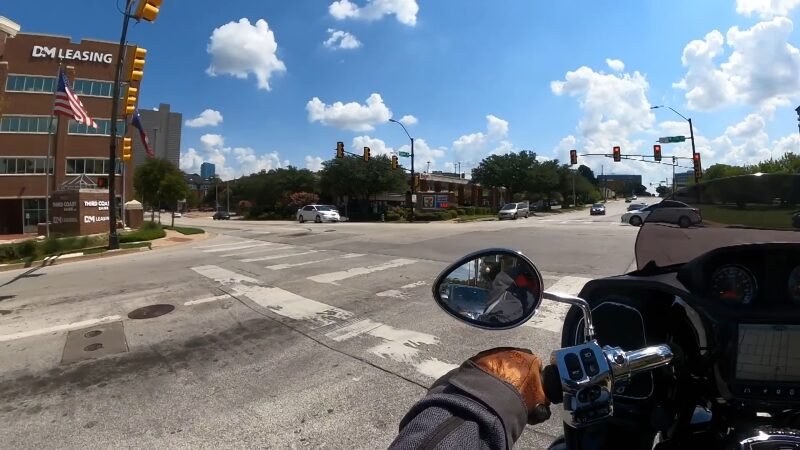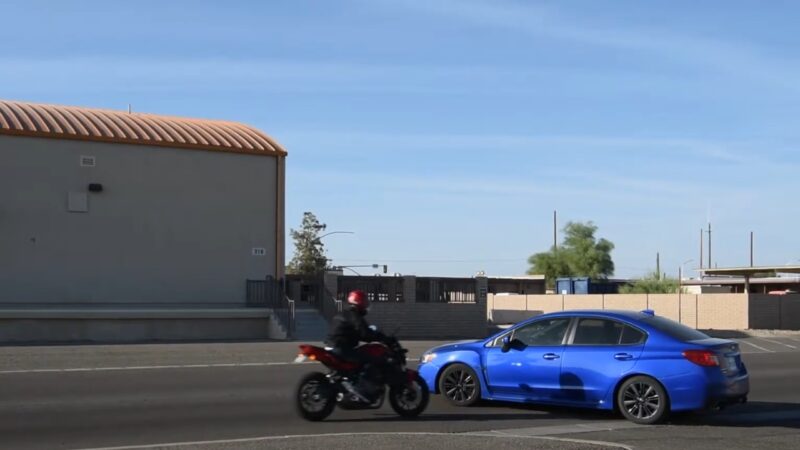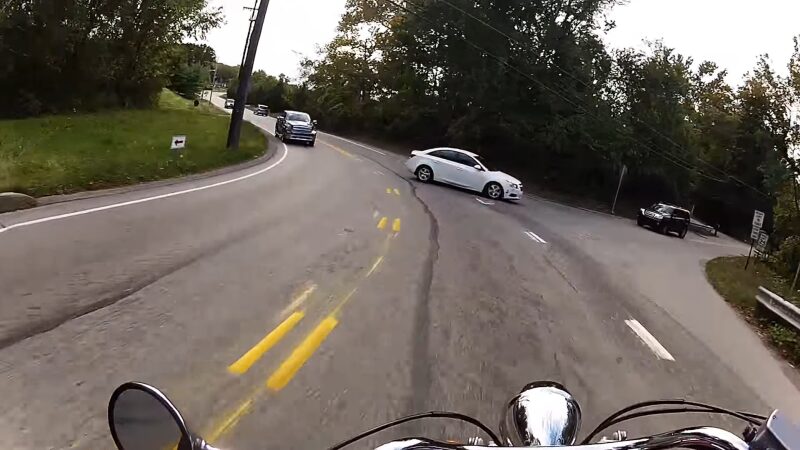If you’ve been injured in a motorcycle accident, contact a motorcycle accident attorney promptly.
A skilled attorney can help you gather evidence and negotiate a higher claim against the responsible driver.
Here’s what you need to know about left-turn motorcycle accidents, including common causes and prevention.
Why Left-Turning Vehicles Pose Such a High Risk to Motorcyclists

Left-turning vehicles pose a significant danger to motorcyclists.
A 2023 study published in the National Library of Medicine found that crashes involving a vehicle turning left in front of an oncoming motorcycle are the most common type of fatal two-vehicle motorcycle crash.
Several factors can lead to left-turn motorcycle accidents:
- Failing to Yield: Drivers turning left must yield to oncoming traffic unless signs indicate they have the right of way.
- Misjudging Speed: Motorcyclists and other drivers must accurately judge the speed of oncoming vehicles. Misjudging this can result in serious collisions.
- Speeding and Reckless Driving: Oncoming drivers must adhere to speed limits and traffic laws. A reckless driver can be partially liable for an accident, even if they have the right of way.
- Distracted Driving: Activities like texting, eating, or grooming while driving can cause a driver to miss seeing an oncoming vehicle when turning left.
- Impaired Driving: Drugs and alcohol impair judgment and reaction time, increasing the risk of mistakes while turning left.
- Poor Visibility: Low visibility conditions and obstructed views make it harder to spot motorcycles, which are smaller than other vehicles. Bad weather can also contribute to these accidents.
- Confusing Roads and Intersections: Poorly designed intersections and inadequate signage can lead to left-turn accidents.
How to Prevent

Left-turn accidents often result from the negligence of the turning biker or driver. To prevent these collisions, those turning left should:
- Avoid distractions
- Never drive under the influence
- Avoid driving while tired
- Maintain a safe speed when turning
- Follow traffic signals
- Use proper signaling
- Exercise extra caution when checking for oncoming traffic
Motorcyclists can further protect themselves by:
- Wearing bright clothing to increase visibility
- Avoiding dark clothing in low light conditions
- Slowing down and looking both ways at intersections
- Ensuring their brakes are in optimal condition for sudden stops
- Watching for signs that a driver is about to turn left, such as the direction of their wheels
Statistics on Left-Turn Motorcycle Accidents

Every year, over 80,000 bikers are injured in the United States, with around 5,000 suffering fatal injuries. Left-turn accidents are particularly deadly. According to the National Highway Traffic Safety Administration (NHTSA), 2,598 fatal motorcycle accidents involving multiple vehicles occurred in 2017. Of these, 1,098 (42%) involved left-turn accidents.
The NHTSA also reported that approximately 22% of traffic accidents are left-turn accidents, and over 53% of crossing-path accidents involve a driver making a left turn. The U.S. Department of Transportation identifies left-hand turns as one of the most dangerous driving maneuvers.
Turning left is hazardous because it involves navigating multiple potential hazards simultaneously, especially at intersections. Factors include obstructed views, speeding oncoming traffic, and traffic lights and signage.
Motorcyclists and drivers struck while making a left turn are at high risk of deadly T-bone collisions, which can result in debilitating or fatal injuries.
Left-Turn Motorcycle Accident Compensation
If you were injured in a left-turn accident, you can file a claim with the at-fault driver’s insurance company, but you’ll need to go through your own insurance first. For example, Kentucky’s no-fault system requires motorcyclists and other drivers to have $10,000 of Personal Injury Protection (PIP) coverage.
If PIP insurance doesn’t cover all your injury-related expenses or if you’re seeking compensation for vehicle damages, you can file a claim against the negligent driver.
Left-Turn Motorcycle Accident Liability

To recover damages from another driver, you must prove they were at fault for your accident. Examples of proof include:
- Photographic and video evidence of the collision’s aftermath
- Surveillance footage
- Police accident reports
- Eyewitness statements
- Testimony from accident reconstruction experts
You also need to provide evidence that you suffered losses directly due to the negligent driver’s actions. The type of evidence required depends on the damages you seek, which may include medical bills, lost wages, property damage, loss of future earnings, and pain and suffering. Forms of evidence include:
- Medical records, including doctors’ notes
- Medical bills and related expenses
- Repair estimates
- Testimony from medical experts about the extent of your injuries
- Testimony from friends, family, and co-workers about your physical, mental, or emotional pain
- Employment records showing time away from work due to your injuries
Final Words

Motorcyclists face a higher risk of serious injury in accidents, especially in left-turn collisions. Understanding the causes, prevention measures, and legal options for left-turn motorcycle accidents can help you navigate the aftermath of such an event.
If you find yourself injured in a left-turn accident, it is crucial to act quickly and seek the assistance of a skilled motorcycle accident attorney. They can help you gather evidence, prove liability, and secure the compensation you deserve.
Knowing what is considered high mileage for a motorcycle can be important for assessing the condition and reliability of your bike, which may impact your safety on the road.
By staying informed and taking the necessary precautions, both motorcyclists and other drivers can help reduce the number of these dangerous accidents. Stay safe, and always be vigilant on the road.






